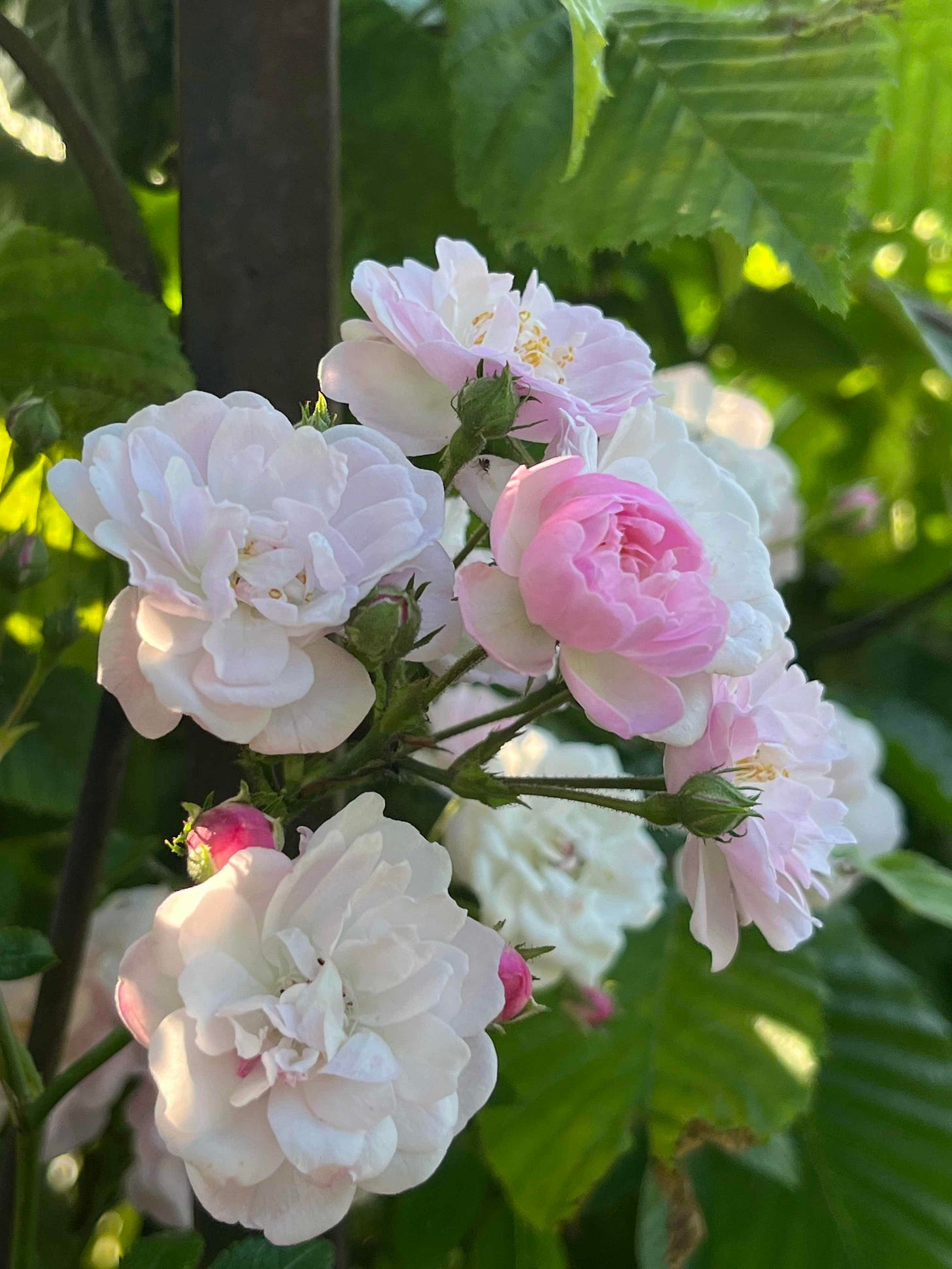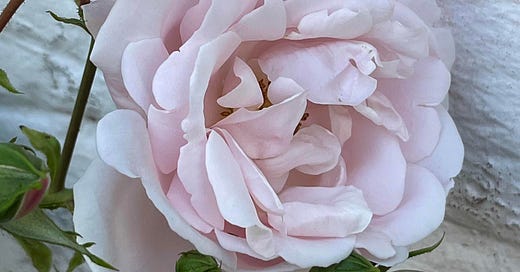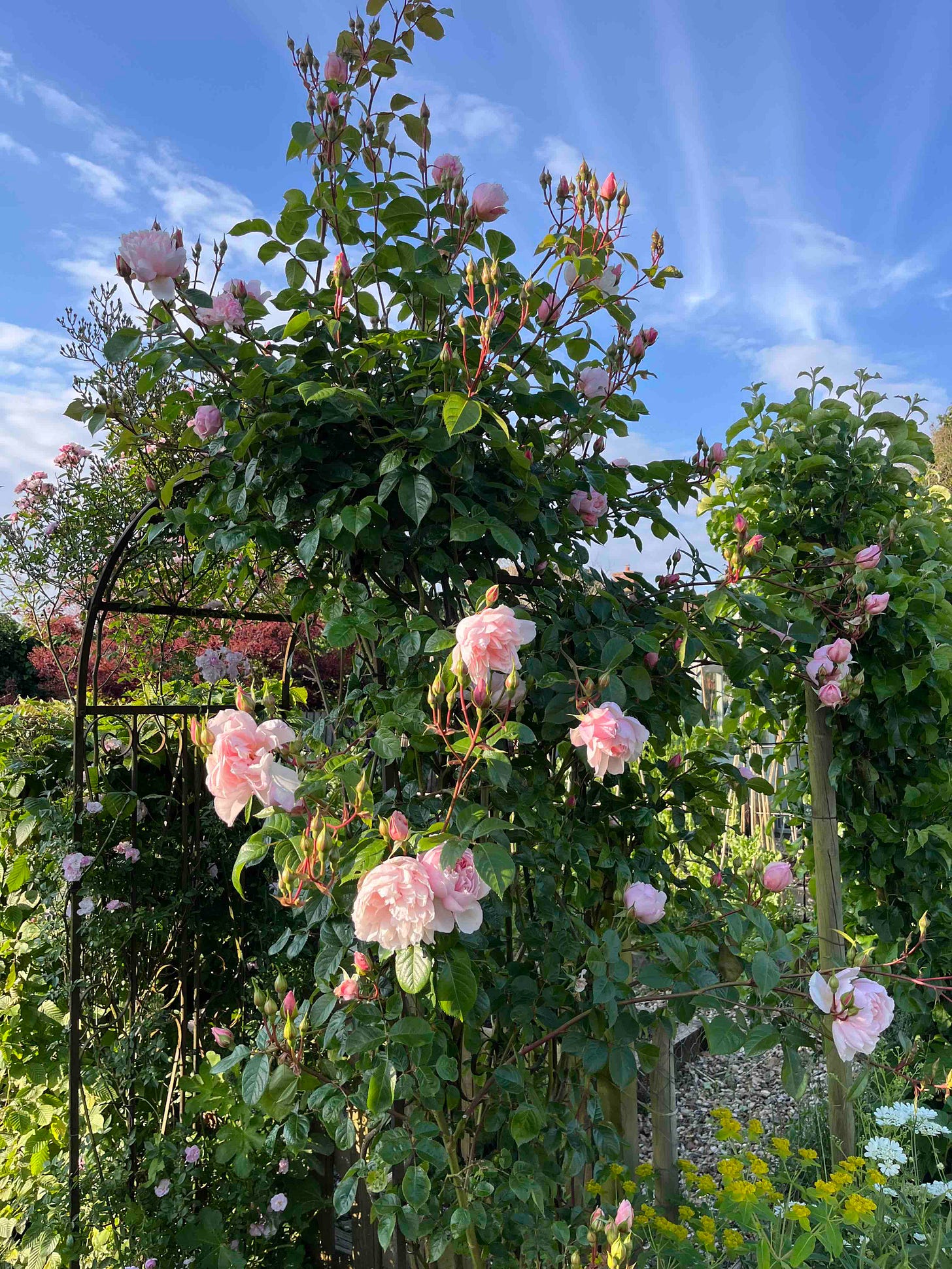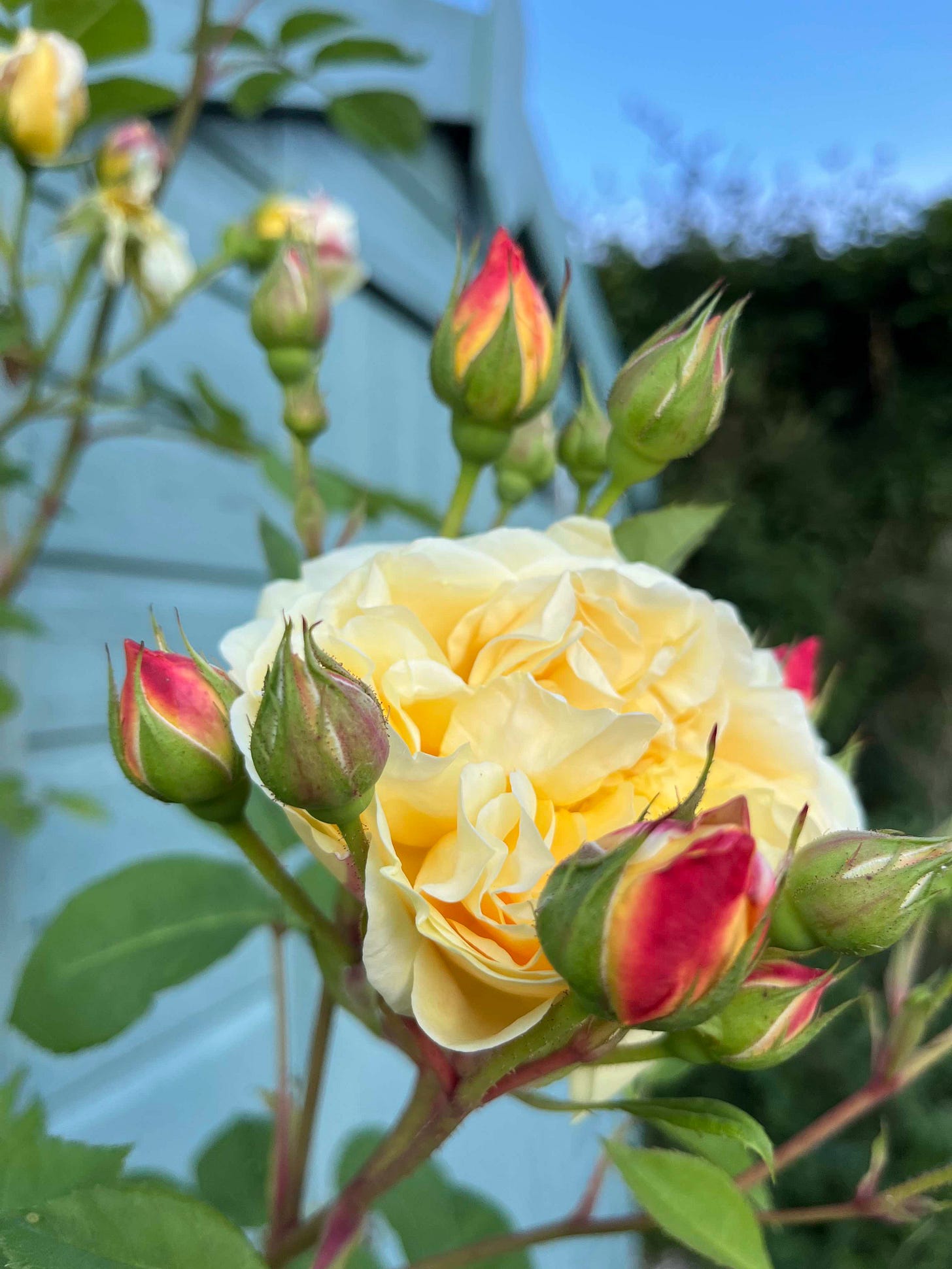Hello everyone and welcome to any new subscribers this week. If you’re new to this, you’ll find out more about me and about what happens week by week here. If you download the Substack app on your phone you’ll find shorter posts from me in Notes on what I’m up to in the garden on a day-to-day basis.
June. Where to start? There is so much going on in the garden that I can barely keep up. The growth has been phenomenal this year because we’ve had so much rain here in Britain, so my garden is ultra-green and lush, and to be honest, slightly jungle-like. I have quite rich soil here so this combined with masses of rain has made some things grow too much, and I have already had to cut back some geraniums that have collapsed in the middle. If you have rich soil you soon learn that it is more difficult to grow the plants that prefer nutrient-poor conditions because they put on far too much soft, sappy growth that can’t be sustained. For me, these plants include nepeta, some geraniums and anthemis. I wrote about doing the Chelsea Chop last week - you just have to be brutal and cut back anything that looks like it’s over-accelerating in the knowledge that it won’t look so good for a week or two but then it will pick up again.
The roses are out, and I must have pruned them well in February because they are all blooming furiously this year. I have a confession. I have only recently got into growing roses. I told myself they were old fashioned, but I think the truth is I’ve always been slightly afraid of them because it’s not a group of plants that I know well, and I didn’t quite grasp how to prune them or take care of them. Gradually my views have changed and I’m so glad I got over the hump because they are the most satisfying things to have in the garden. One of the gardens I visited last year that sealed the deal with roses for me was Dorset Walled garden, where Susanne Cooper has over 400 incredible roses growing in beautifully designed borders. You can read my H&G article about this garden here.
The much more limited palette of roses in my garden started with the classic ‘New Dawn’ that now climbs up one side of my house. I also have the gorgeously perfumed ‘Generous Gardener’ growing over an arch into my kitchen garden, so I catch the scent every time I walk in and out. My mother-in-law, who sadly is no longer with us, gave me a lovely pale yellow David Austin rose that I think is ‘Pilgrim’, now clambering all over my shed and reminding us of her with every flower. To tie in with this colour, I have just planted two new roses in the border with the slightly off-putting name ‘Tottering by Gently’, which was introduced to me by a friend. It has charming single pale yellow flowers that will hopefully shine out from the border when they get going. And finally I have a large, unwieldy specimen of the moss rose ‘William Lobb’, which has the most luscious, deep purple-magenta flowers, and mossy, aromatic buds. This is an old rose, so unlike some of the modern hybrids which are repeat flowerers, it’s a one-hit wonder, flowering once in June and then fading into the background. I plant magenta cosmos all around it to take over afterwards.
Talking of which, I still have many, many plants waiting to go into the ground this year. All my seed-sown flowers are getting too big for their pots. I need a clear day or two to do this, and if I don’t do it soon, they will lose their momentum. You can tell when they are unhappy and need to move on; as the nutrients run out in their compost, they start to turn yellow and sickly looking. They should pick up as soon as they get their roots into the ground, but they can take longer to get going if they have had their growth checked in their pots.

Other jobs this month include sowing biennials like sweet rocket, honesty, wallflowers and foxgloves. Biennials produce foliage one year and flowers the next, so if you sow them now they should flower for you next spring. Sow them in seed trays or modules and put them in a cold frame or cool, sheltered spot until they have germinated. Leave them outdoors to grow on, and plant them out in autumn. You can also pot some on leave them until spring to plant out. In the vegetable garden I’m harvesting the first salad leaves, broad beans and strawberries, and there is a beautiful crop of whitecurrants which I use to make delicious jelly. I plant out any remaining courgettes or squash plants this month, and keep on top of my tomatoes in the greenhouse, pinching out side shoots and tying in the main stems.
Other garden tasks for June
• Hoe borders regularly to keep weeds down
• Prune spring-flowering shrubs
• Plant out half hardy annuals and summer bedding plants
• Stake tall or floppy plants
• Deadhead flowers to encourage repeat flowering
• Cut back any early flowering perennials that have collapsed
• Clip topiary plants if the weather isn’t too dry or too wet
• Water anything that has been recently planted and keep watering until established
If you have enjoyed this post do hit the like button as it helps other people find me! Thank you x








